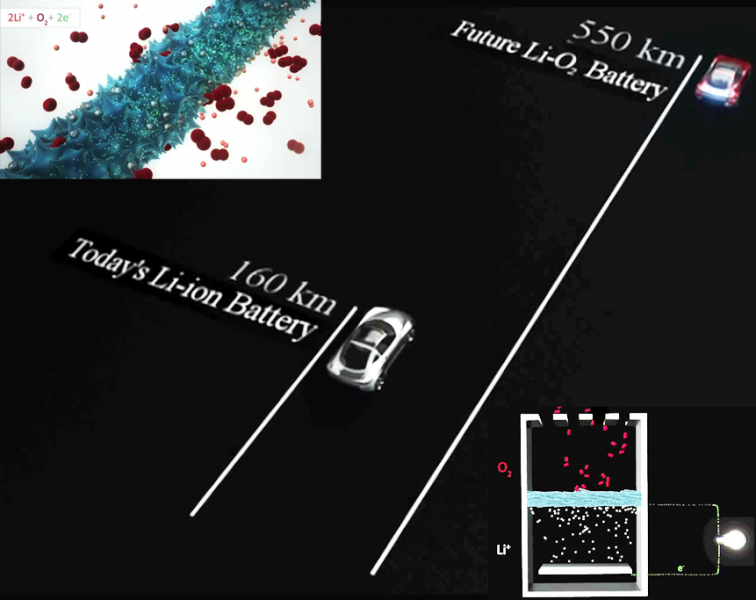Lithium-oxygen
batteries have a great potential to enhance the gravimetric energy density of
fully packaged batteries by 2-3 times that of lithium-ion cells,
thus
greatly increasing the range of electric vehicles.
MIT MRSEC researchers have been
genetically engineering biology to build and assemble new catalyst electrode
materials with improved performance. They report
an electrode design principle to improve specific capacity and cycling
performance of lithium-oxygen batteries by utilizing high efficiency metal
oxide nanocatalysts
assembled by the M13 virus with earth abundant elements at room temperature. By
further engineering the virus to incorporate 3-5 wt% of
palladium nanoparticles, this hybrid nanocatalyst
achieved 20% higher
specific capacity at 6 times higher current density,
compared
to traditionally formed manganese oxide electrode materials. This biological approach could open up new
possibilities for catalysis design and assembly of battery materials for future
electric ve hicles.
hicles.
Image from an MIT animation describing
the development and use of the virus lithium air battery found at http://www.youtube.com/watch?v=pUVrUIV4xu4